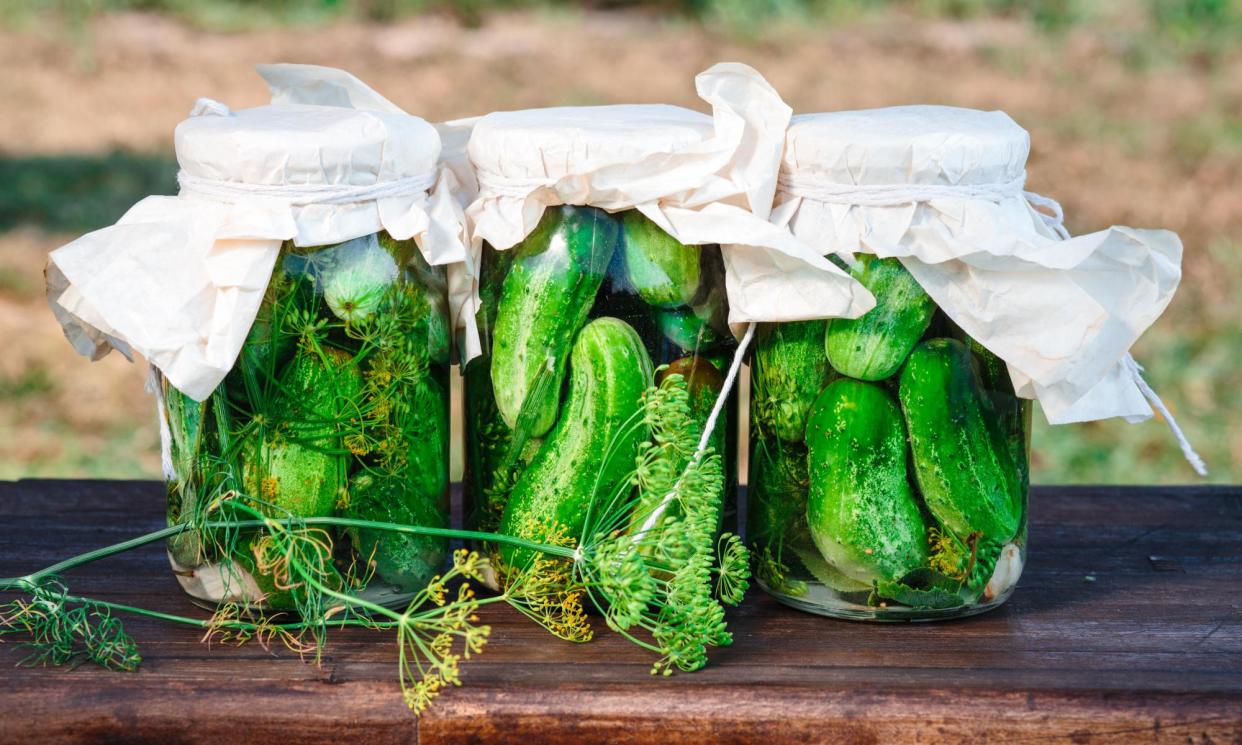Preserve, pickle, freeze, ferment: how to capture your garden’s summer harvest

The days are getting shorter, the last flush of blackberries are hanging sweetly on their prickly branches and a final flurry of tomatoes are ripening. With the end of the summer crops nigh, my thoughts have turned to how to capture their magic for times ahead when I’m craving sun.
My favourite way to preserve fruit is to make jam. It started with a new year’s resolution in 2011 to learn how, and I’ve been zealously pouring sugar over berries ever since. Two recipes I like to follow are from Kylee Newton’s book, The Modern Preserver: damson jam with orange, and blackberry jam with the juniper tones of gin. Jam-making involves cooking the fruit in water before adding sugar (which stops the fruit from softening further), then boiling away the excess liquid until the concoction reaches the desired consistency.
Make a quick pickle by placing thinly sliced cucumber in a jar with coarse salt, vinegar, dill and a red chilli
Pectin is needed for jams to set, so those made from high-pectin fruit, such as blackcurrants and gooseberries, set easily. Others, such as strawberries, need extra pectin (in the form of a powder or jam sugar) to form a preserve that will solidify and keep.
Another set of summer flavours I’m eager to capture this year is that of the soft, leafy herbs I’ve been stirring through sauces, bashing into pesto and piling on top of salads. Thankfully, basil, coriander, dill, chervil and fennel can all be stored in the freezer. Finely chopped, these herbs can be placed in water or olive oil, portioned into an ice cube tray, then kept in freezer bags for a few months, ready to be defrosted or plopped directly into winter soups and stews. There are also plenty of vegetables that can be prepped and stored in the freezer, including runner beans, chopped kale and cubed squash.
Related: The power of pickles: a guide to preserving almost everything – from jam-making to chutneys
If, like me, you like tangy pickled vegetables, many crops – courgettes, cucumbers and beetroot to start – are ideal for preserving in salt water or vinegar. I like to make a quick pickle by placing thinly sliced cucumber in a sterilised jar with a few teaspoons of coarse salt, some white vinegar, dill fronds and a red chilli. Popped in the fridge and shaken regularly, the contents transform into crisp snacks submerged in brine. They won’t last as long as whole pickled cucumbers but are easy to make and utterly delicious.
Finally this season, I’m going to attempt to ferment the green tomatoes that fail to ripen, following chef Olia Hercules’ easy instructions: pop the tomatoes in a jar and cover them with a brine made of 8-10% salt (plus some garlic or peppercorns, if you like) and leave until the liquid turns opaque. The result – as Hercules describes it – is sweet, sour and absolutely delicious.


